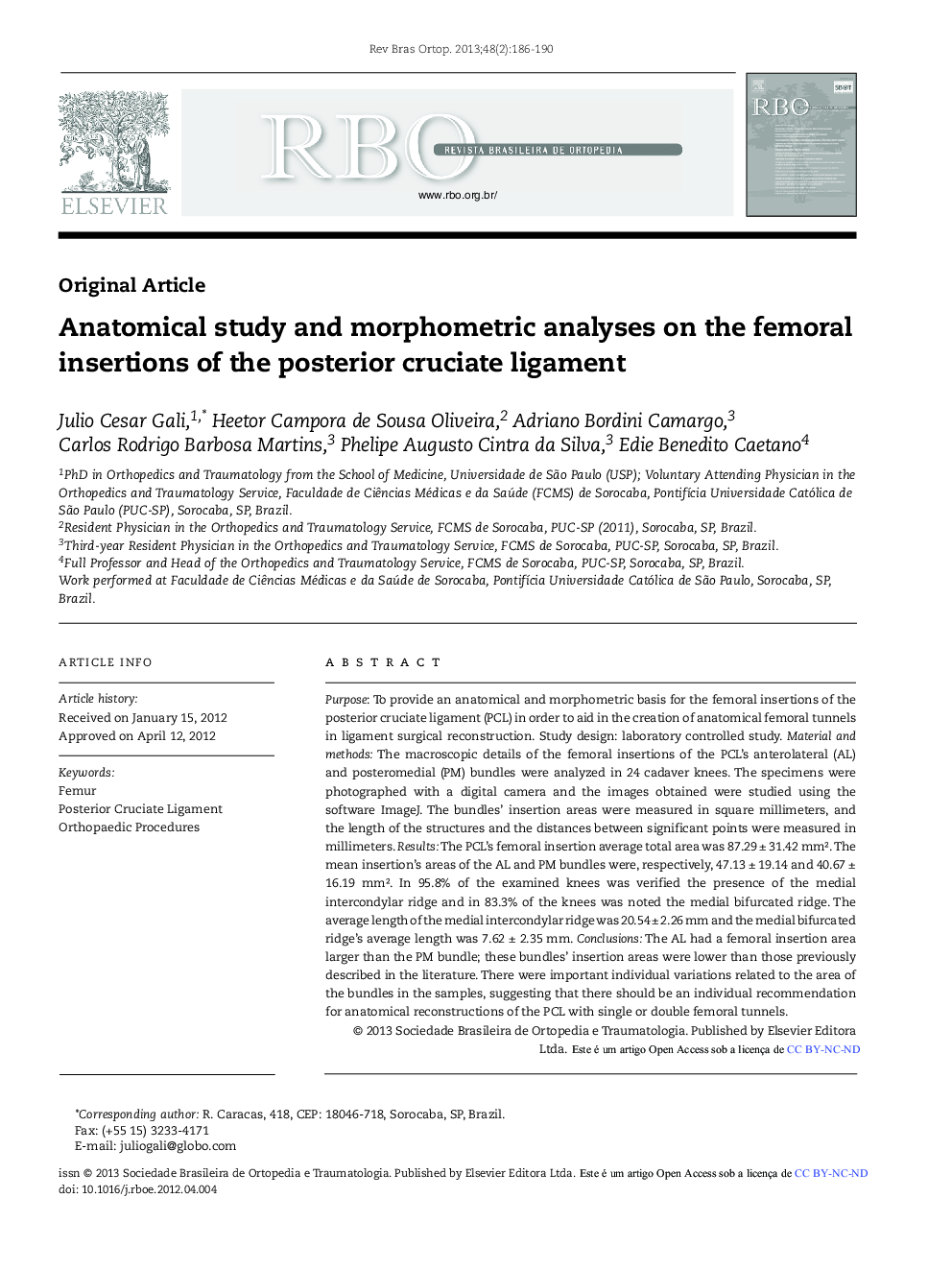| Article ID | Journal | Published Year | Pages | File Type |
|---|---|---|---|---|
| 2718261 | Revista Brasileira de Ortopedia (English Edition) | 2013 | 5 Pages |
PurposeTo provide an anatomical and morphometric basis for the femoral insertions of the posterior cruciate ligament (PCL) in order to aid in the creation of anatomical femoral tunnels in ligament surgical reconstruction. Study design: laboratory controlled study.Material and MethodsThe macroscopic details of the femoral insertions of the PCL's anterolateral (AL) and posteromedial (PM) bundles were analyzed in 24 cadaver knees. The specimens were photographed with a digital camera and the images obtained were studied using the software ImageJ. The bundles’ insertion areas were measured in square millimeters, and the length of the structures and the distances between significant points were measured in millimeters.ResultsThe PCL's femoral insertion average total area was 87.29 ± 31.42 mm2. The mean insertion's areas of the AL and PM bundles were, respectively, 47.13 ± 19.14 and 40.67 ± 16.19 mm2. In 95.8% of the examined knees was verified the presence of the medial intercondylar ridge and in 83.3% of the knees was noted the medial bifurcated ridge. The average length of the medial intercondylar ridge was 20.54 ± 2.26 mm and the medial bifurcated ridge's average length was 7.62 ± 2.35 mm.ConclusionsThe AL had a femoral insertion area larger than the PM bundle; these bundles’ insertion areas were lower than those previously described in the literature. There were important individual variations related to the area of the bundles in the samples, suggesting that there should be an individual recommendation for anatomical reconstructions of the PCL with single or double femoral tunnels.
